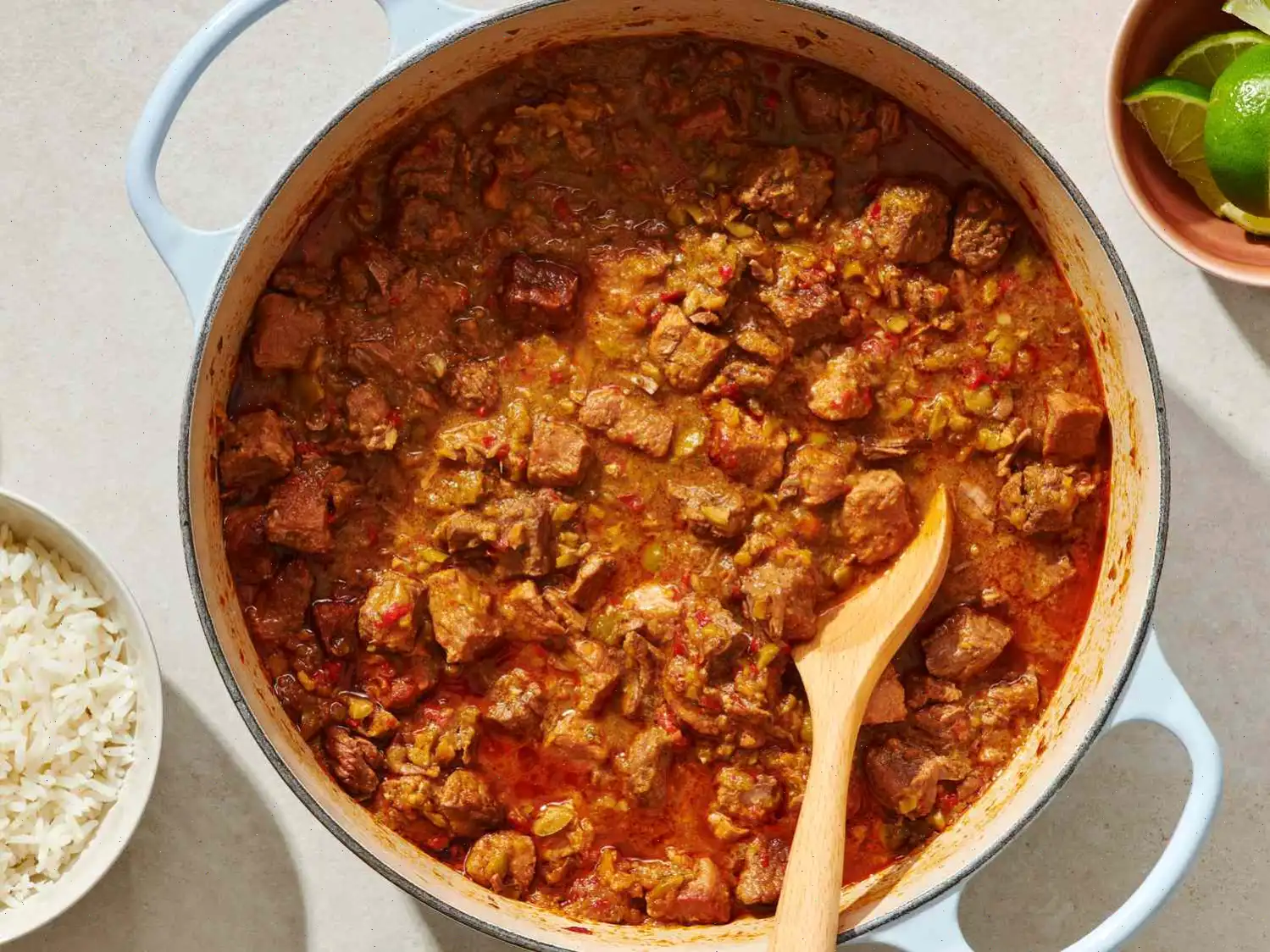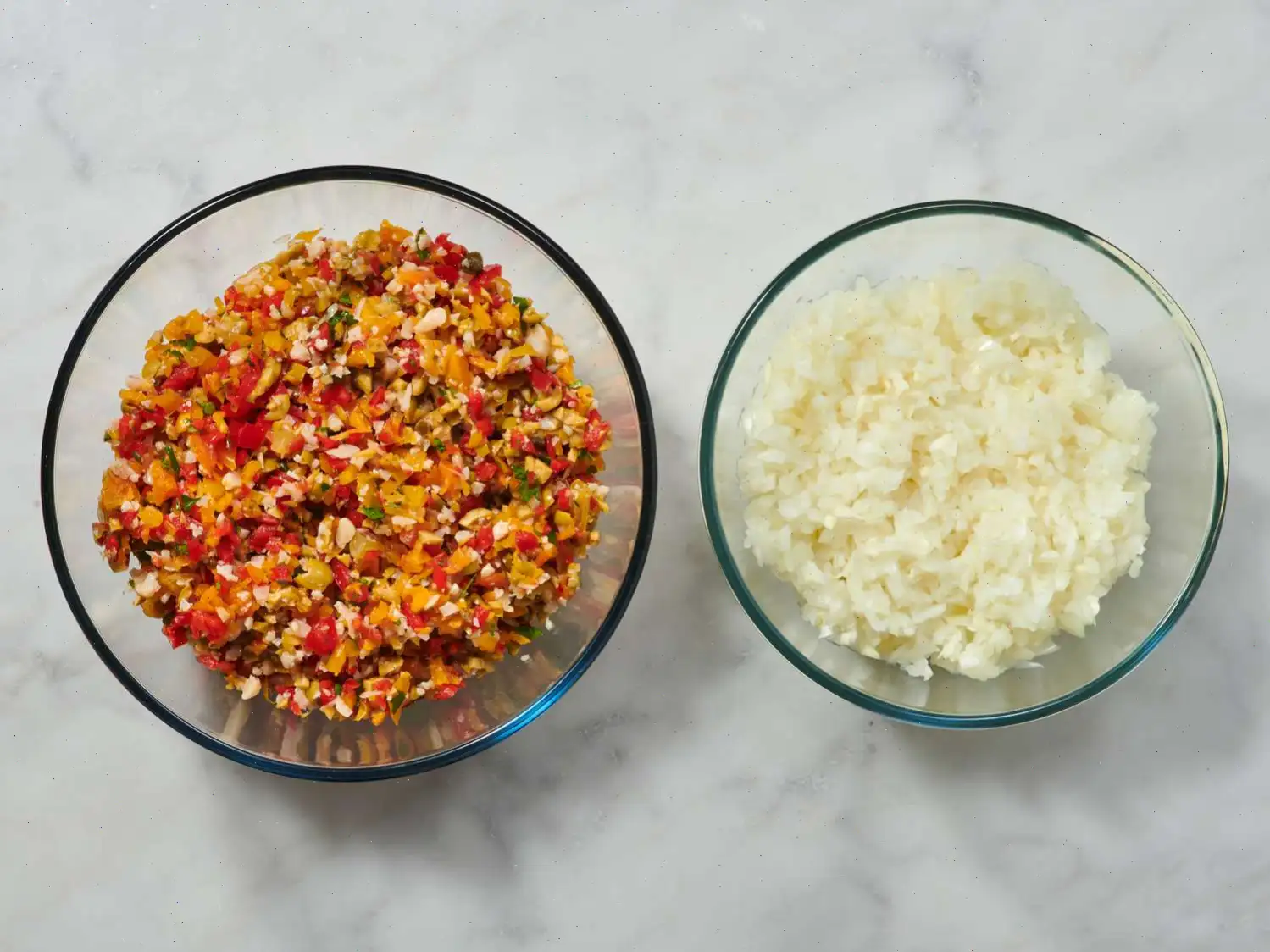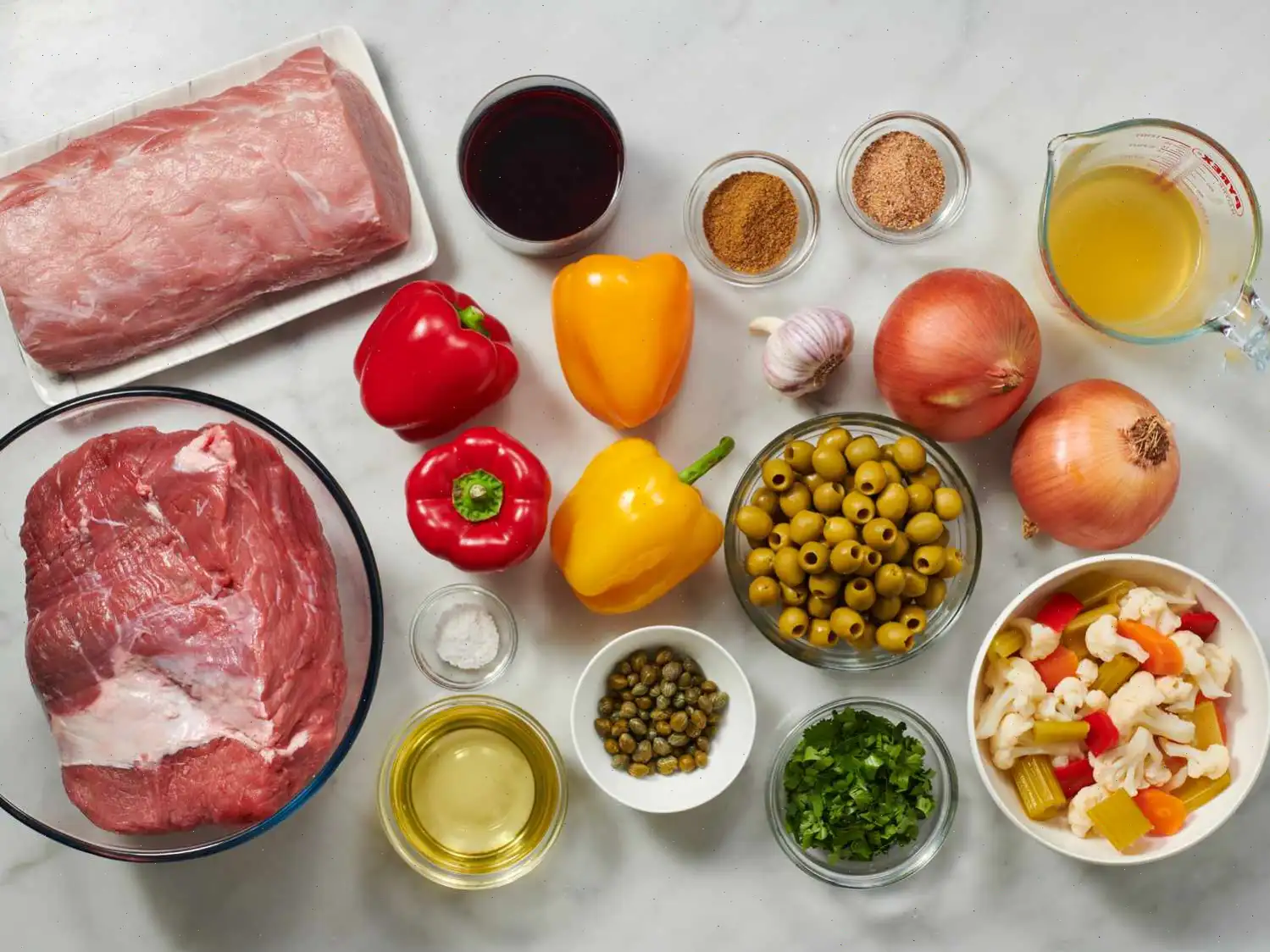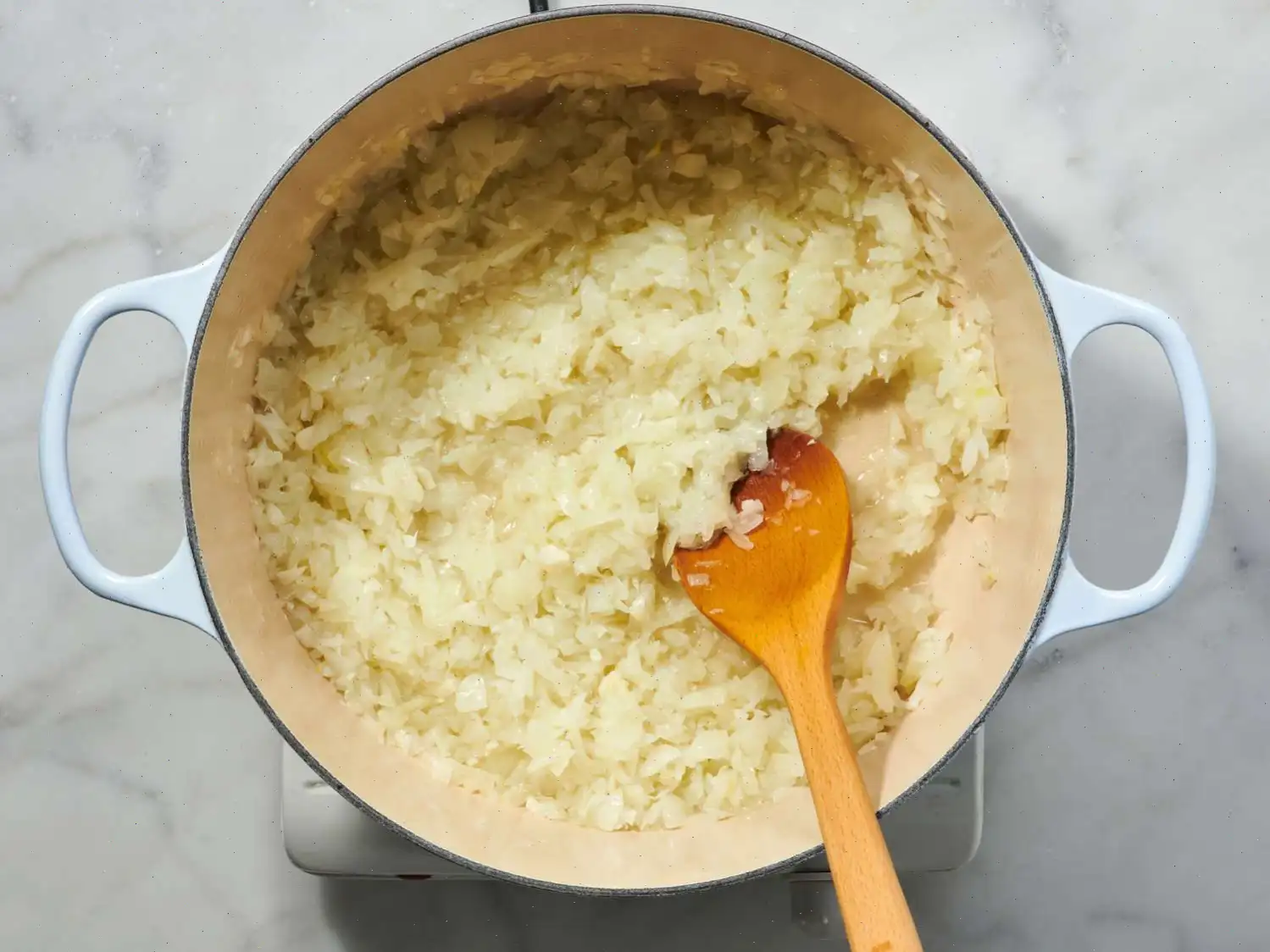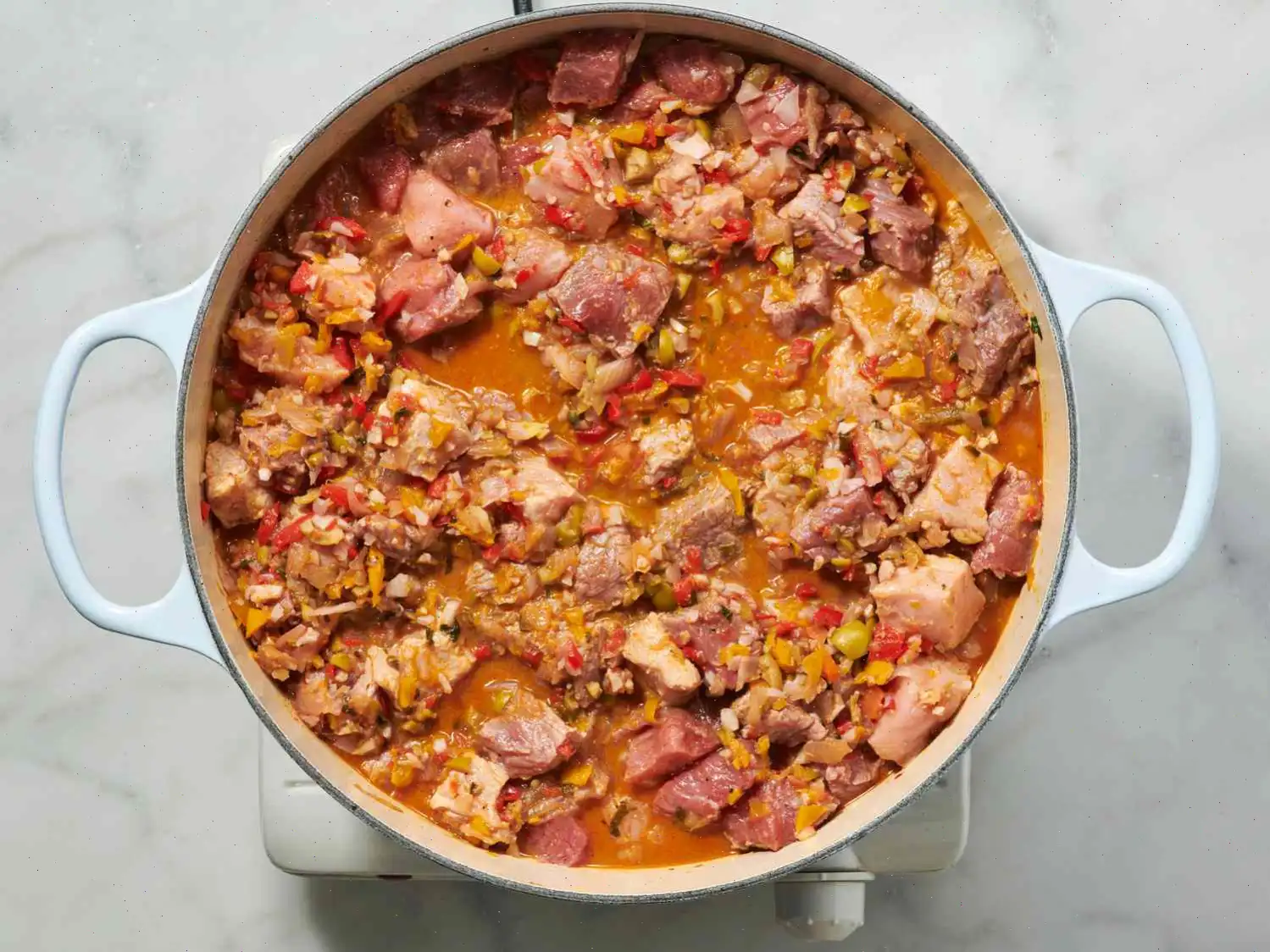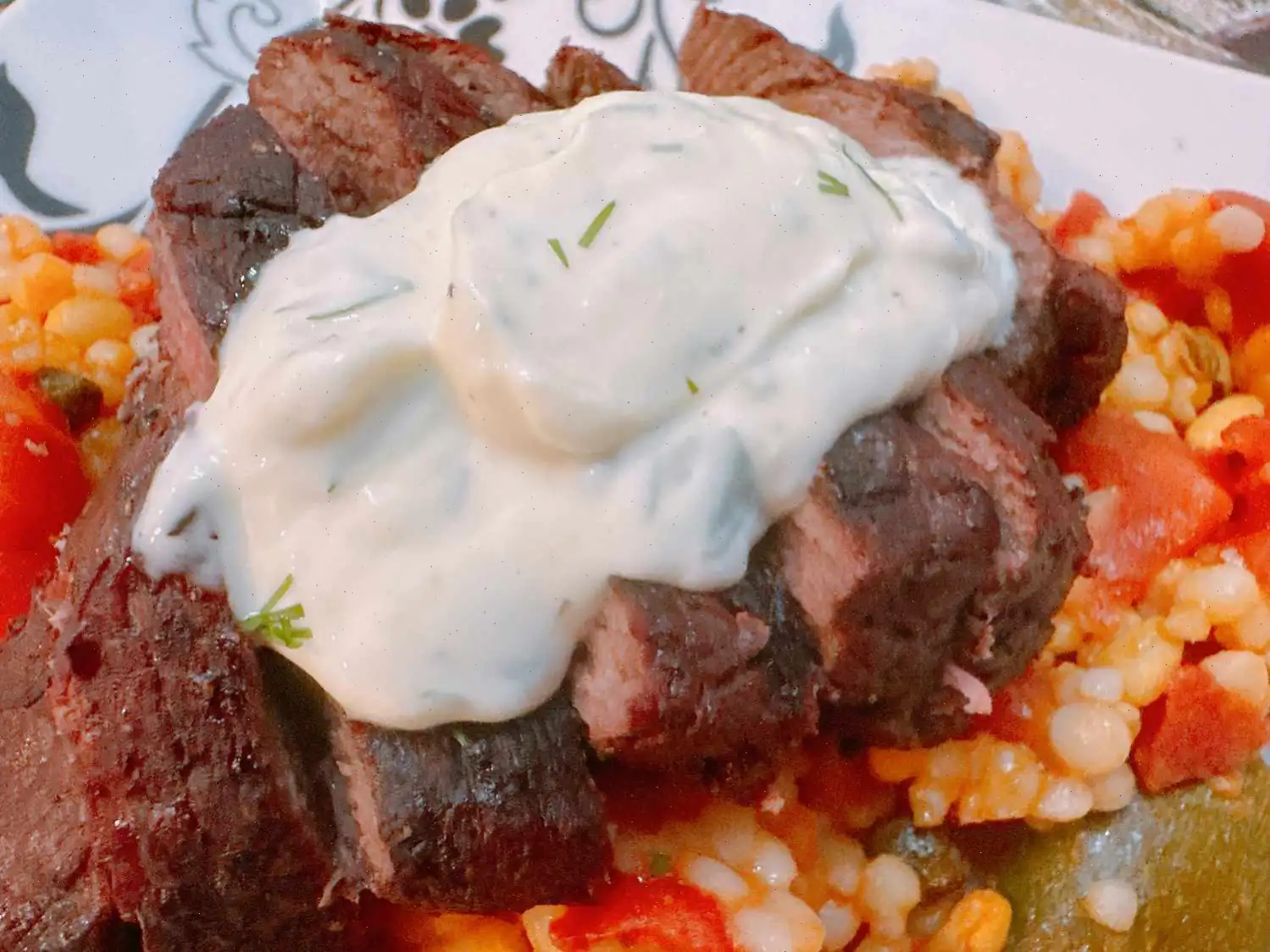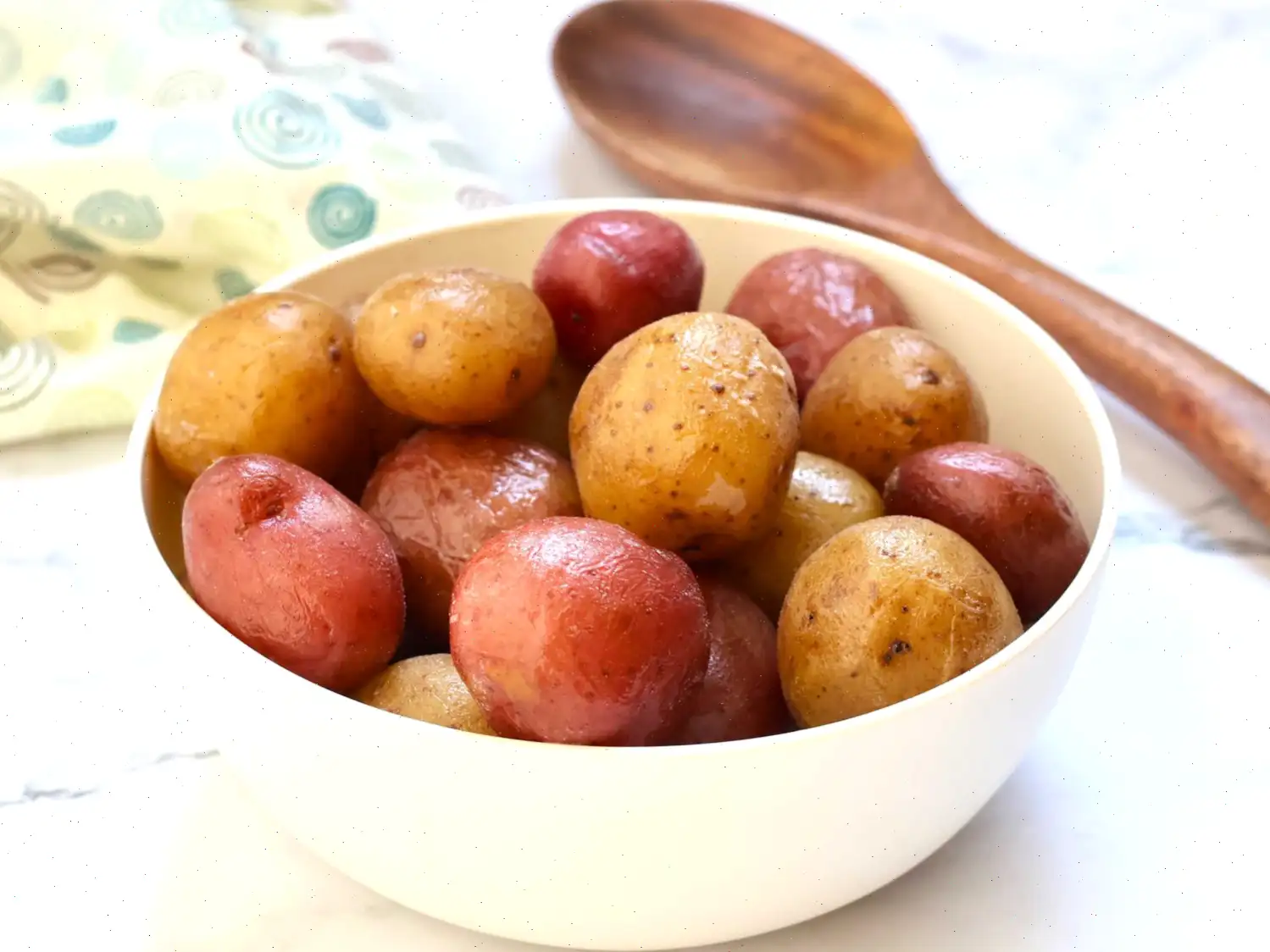
Beef and Pork Guiso Recipe
This hearty stew combines tender beef, flavorful pork, and a blend of vegetables, herbs, and spices. Perfect for a cozy meal, this dish is easy to prepare and sure to satisfy!
Ingredients
- 6 pounds bottom round beef roast
- 3 pounds pork loin roast
- 2 tablespoons adobo seasoning, divided, or to taste
- 2 tablespoons ground cumin, divided, or to taste
- 2 large onions
- 1 head garlic
- 2 red bell peppers
- 1 orange bell pepper
- 1 yellow bell pepper
- 10 ounces green olives
- 4 cups pickled vegetables (giardiniera)
- 1/4 cup capers
- 1/2 cup chopped cilantro
- 1/2 cup corn oil
- 1 cup red wine
- 1 cup chicken broth
- Salt to taste
Directions
- Begin by gathering all your ingredients and preparing them for cooking.
- Cut the beef and pork into very small cubes. Season them with about half of the adobo seasoning and cumin.
- Using a food processor, chop the onions and garlic and set aside.
- Chop the red, orange, and yellow bell peppers, along with the garlic, green olives, pickled vegetables, capers, and cilantro in a food processor. Place everything into a large bowl. You may need to chop the vegetables in batches.
- Heat the corn oil in a very large pot over high heat. Once hot, add the chopped onions and garlic. Cook for about 5 minutes, stirring occasionally.
- Next, add the chopped peppers, olives, pickled vegetables, capers, and cilantro to the pot. Stir and cook for another 5 minutes, making sure everything is well combined.
- Pour in the red wine and continue cooking for 5 more minutes, stirring occasionally.
- Add the seasoned beef and pork to the pot. Stir everything well to ensure the meats are evenly distributed with the vegetables.
- Pour in the chicken broth and season with salt to taste. Bring the mixture to a rolling boil.
- Once it reaches a boil, reduce the heat to medium-low. Cover the pot and let it simmer for about 5 hours, stirring occasionally.
- After the first 2 hours of simmering, taste the stew and add the remaining adobo seasoning and cumin if needed.
- Once the stew is well reduced and the meat is tender, remove from heat and serve hot.
Cook's Notes
- Leftovers can be frozen and will keep well for quite some time, though they're so delicious they may not last long!
- A food processor makes chopping the vegetables quick and easy, especially when you have so many ingredients to prepare.
Nutrition Facts (per serving)
- Calories: 513
- Total Fat: 32g (41% Daily Value)
- Saturated Fat: 11g (53% Daily Value)
- Cholesterol: 174mg (58% Daily Value)
- Sodium: 359mg (16% Daily Value)
- Total Carbohydrate: 4g (1% Daily Value)
- Dietary Fiber: 1g (4% Daily Value)
- Total Sugars: 1g
- Protein: 48g (96% Daily Value)
- Vitamin C: 26mg (28% Daily Value)
- Calcium: 43mg (3% Daily Value)
- Iron: 4mg (21% Daily Value)
- Potassium: 547mg (12% Daily Value)

The Story Behind Beef and Pork Guiso
Beef and Pork Guiso is a traditional Spanish-inspired stew that evolved over centuries in Latin America, blending European culinary techniques with local ingredients. The term "guiso" comes from the Spanish word for stew, originally referring to a slow-cooked mixture of meat and vegetables seasoned to perfection. Historically, it was a hearty dish prepared for large gatherings, making use of available cuts of beef and pork, and incorporating preserved ingredients like olives and pickled vegetables to extend shelf life.
Regional Variations
Regional adaptations of guiso can be found throughout Latin America. In Mexico, for example, it often includes colorful bell peppers and fresh cilantro, while in the Caribbean, the stew may be enriched with tropical spices and occasionally coconut milk. Some regions emphasize a balance of tangy and savory flavors, adding capers or pickled vegetables, while others focus on a deep, robust meat flavor with minimal garnish. Each variation reflects the local palate and ingredient availability.
Distinguishing Features
Unlike other stews such as chili or beef bourguignon, Beef and Pork Guiso uniquely combines two types of meatbeef and porkcut into small cubes and simmered for several hours. The inclusion of chopped olives, capers, and giardiniera distinguishes it from simpler meat-and-vegetable stews, giving it a complex, slightly tangy flavor profile. This blend of textures and tastes sets it apart, offering both a comforting richness and a vibrant freshness.
Where It Is Typically Served
Guiso is commonly served as a main course for lunch or dinner, accompanied by rice, pasta, or bread to soak up the flavorful sauce. It is a staple in family gatherings, celebrations, and festive occasions, often made in large quantities to share. In restaurants, it may be presented as a hearty entre, sometimes garnished with fresh cilantro or additional pickled vegetables for an authentic touch.
Interesting Facts
- Guiso can be prepared in advance and often tastes better the next day as the flavors meld together over time.
- The dish reflects a fusion of Spanish culinary heritage and Latin American ingenuity, incorporating both imported and locally sourced ingredients.
- Traditional guiso recipes were designed to maximize flavor from inexpensive cuts of meat, making it a practical yet indulgent dish for large families.
- Modern adaptations often use food processors to speed up preparation, a technique that wasnt available in historical versions.
- Despite being a slow-cooked stew, guiso remains versatile, suitable for both everyday meals and special celebrations.
You can listen to this recipe in AI audio format. Simply click the play button below to listen to the content in a format that suits you best. It’s a great way to absorb information on the go!
FAQ about Beef and Pork Guiso Recipe
Comments
Robert Mitchell
12/09/2024 09:20:18 PM
Initially, I was daunted by the preparation process, but utilizing a food processor made the vegetable chopping a breeze. The end result was incredibly flavorful, with a delightful tanginess from the olives and capers standing out. Pairing it with rice made for a satisfying meal. In my next attempt, I plan to slice the meat into larger chunks to enhance its tenderness even more after a 5-hour cook.



